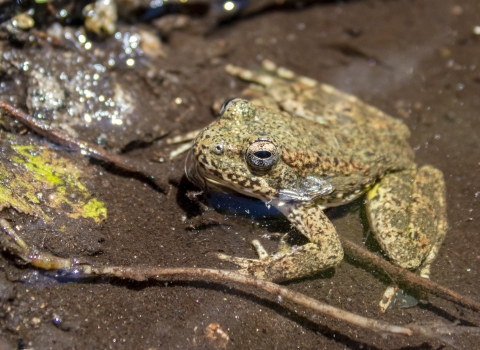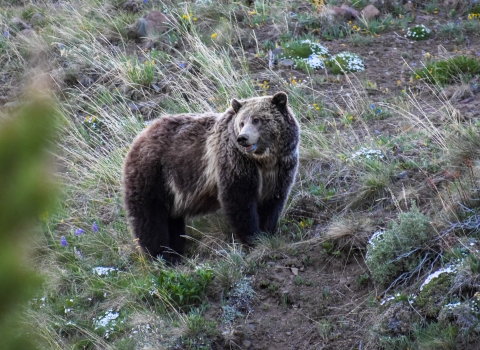PORTLAND, Ore. – The U.S. Fish and Wildlife Service has announced a decision to adopt a final barred owl management strategy to protect imperiled northern and California spotted owls in Washington, Oregon and California from invasive barred owls. The management strategy is the first comprehensive tool developed to address the significant threat posed by non-native and invasive barred owls to the survival of northern and California spotted owls. The strategy calls for a step-by-step process, relying on willing land managers and landowners’ management of barred owls. Under maximum implementation, the strategy would result in the annual removal of less than one-half of 1% of the current North American barred owl population.
Barred owls are native to eastern North America but moved westward in the 20th century and now surpass northern spotted owls in numbers across most of Washington, Oregon and California. Northern spotted owl populations have been rapidly declining due to competition from invasive barred owls and habitat loss and are listed as a threatened species. California spotted owls, which are proposed for Endangered Species Act listing, face a similar risk as barred owl populations continue to move south into their range.
“As wildlife professionals, we approached this issue carefully and did not come to this decision lightly,” said Service Oregon Office state supervisor Kessina Lee. “Spotted owls are at a crossroads, and we need to manage both barred owls and habitat to save them. This isn’t about choosing one owl over the other. If we act now, future generations will be able to see both owls in our Western forests.”
In developing the strategy, the Service considered a full range of alternatives, including non-lethal options for barred owl management, using the best available science. Lethal removal of barred owls from identified management areas is the only population reduction method proven to work in reducing barred owl populations and improving spotted owl populations.
The Service has a Migratory Bird Treaty Act special purpose permit to implement the strategy. Under this permit, the Service can designate interested Tribes, federal and state agencies, companies, or specific landowners to implement barred owl management on their lands if the actions are consistent with the strategy, the conditions of the permit (including the required qualifications and training for the removal specialists), and state laws and policies. Those implementing the plan will be accountable for annual monitoring and reporting.
Lethal removal of barred owls by trained professionals would occur in less than half of the areas where spotted and invasive barred owls co-exist within the northern spotted owl’s range; and would limit their invasion into the California spotted owl’s range.
“Barred owl removal will be conducted in designated areas by trained professionals authorized to carry out removal under our strategy and permit,” said Lee. “No public hunting of barred owls is allowed under the strategy and no lead ammunition will be used for removals.”
Public feedback was received at multiple points during the development of the strategy and decision process, including during a scoping period in 2022 and again when the draft environmental impact statement was released in 2023. Public and partner comments were considered in the completion of the strategy and this decision.
More information is available on the Service’s barred owl management website, including the final EIS and strategy, record of decision, and frequently asked questions. The notice of availability for the final strategy and record of decision will publish in the coming days in the Federal Register at https://www.regulations.gov at Docket No. FWS-R1-ES-2022-0074.





